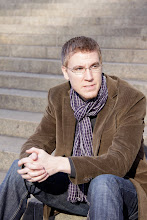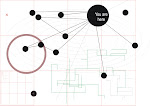The lifestyle enclave becomes a means of self-expression where the self has been divided between the working public life and private and intimate sphere of the home. Once the self is separated from family, religion, and work, individuals can express their “unique identity” by joining lifestyle enclaves. Rooted in private leisure and consumption, enclaves gather those who are “socially, economically, or culturally similar” to enjoy like-minded individuals.[1] In contrast to a community which seeks to be inclusive, celebrating the interdependence of public and private life, the lifestyle enclave is exclusive. Marriages and church affiliation reduced to the affinity of lifestyle enclaves.
If we have separated the self from family, religion, work, and tradition, what is left to constitute the self? The simple answer is our preferences. But, what are these choices really based upon? If selves are simply defined by their preferences which are arbitrary, “each self constitutes its own moral universe, and there is finally no way to reconcile conflicting claims about what is good in itself.”[2] Without any larger objective framework for right and wrong, good and evil, the self and its feelings become the moral guide.[3] The self is constantly in progress but without fixed moral end and is able to adapt behavior to various social roles.[4] Self-awareness and self-knowledge leading to personal happiness become the keys forming ones personal moral convictions.
Finding oneself also means finding the story in which our life seems to make sense. Yet they seek to do this as individuals without reference or perceived shared experience with a “larger generational, historical religious context”[5] Each life stage becomes a crisis of further individuation. Public work and the private lifestyle enclave become the means of orienting or filling ones divergent selves.
The individual, while striving for self-reliance still seeks out social interaction in the lifestyle enclave. He is afraid to admit the need to such interaction at the expense of his independence and identity. Rather than an empty, unencumbered, consuming self, what would the interactions of a encumbered self look like? The authors suggest Alasdair MacIntyre’s After Virtue to describe communities of memory. Communities are in many ways constituted by their past and re-telling those stories as its central narrative, and by doing so, “offers examples of men and women who have embodied and exemplified the meaning of the community.”[6] Traditions are built upon the stories and lives the community and “contain conceptions of character, what a good person is like, and of the virtues that define such a character.”[7] These stories tell of health and sickness, success and failure bind the community to the past and turn to the future in hope. We see our part in the story being woven into the greater whole. This takes place at the family level as we pass on stories, heirlooms, and practice family rituals. Communities of memory are also practiced at the national level seen in our holidays and monuments. But powerfully we see the potential for this in the church. Each Sunday and liturgical year, our journey to the church building and worship services re-enact and re-constitute the Christian narrative and community. History and memory become the key to constituting ones future. These communities are enacted in special ways called “practices of commitment.”[8] Memories, hopes, and fears are not only passed on orally but are also practices that define the “patterns of loyalty and obligation that keep the community alive.”[9] Yet, where history is forgotten, community “degenerates into life-style enclaves.”[10]
America has had a varied past of established and disestablished religion. However, once it is disestablished it becomes a private matter to be practiced within the church walls and at home. For many in America, religion is a private and optional matter not to enter the public domain. As a private matter, the autonomous individual, apart from the constraints of any religious system is free to concoct a spirituality as they choose. The authors highlight a woman named Sheila Larson who has named her religion or faith after herself. “Sheilaism” is based on “her little voice” to “love yourself and be gentle with yourself” and “take care of each other.”[11] Since religion is a private matter, diversity or plurality is not only acceptable but encouraged.
[1] Bellah, 72.
[2] Ibid., 76.
[3] Ibid.
[4] Ibid., 76-77.
[5] Ibid., 82.
[6] Ibid., 153.
[7] Ibid.
[8] Ibid.
[9] Ibid.
[10] Ibid., 154.
[11] Ibid., 221.
skip to main |
skip to sidebar


An axis of access is a sacred place which our life revolves around. We hold them dear in our memory. They thrive in our imagination. They root us to this world. (To read more about the nature of this blog read the originating post from 08.07.07)
About Me

- rstander
- Grand Forks, ND, United States
- i am recent MFA grad from University of North Dakota. while i have range of interests, my ongoing research continues to explore the nature of place/space through artistic and liturgical lenses.
Blog Archive
-
▼
2007
(58)
-
▼
October
(13)
- Contemporary Place of Place
- God, be merciful to me, a sinner!
- Place & Space in History
- Space & Place
- Peniel: Jacob and Sacred Space
- Sioux Falls Seminary as Sacred Space
- Habits of the Heart - Robert Bellah pt. 4
- Habits of the Heart - Robert Bellah pt. 3
- Habits of the Heart - Robert Bellah pt. 2
- Habits of the Heart - Robert Bellah pt. 1
- Ways of Seeing
- prodigal rat?
- the achilles of christian theology
-
▼
October
(13)
Labels
- abandonment
- aesthetics
- architecture
- Art
- artists
- books
- canada
- cartography
- commodified memory
- consumerism
- contested space
- CTS-AAR Photos
- Devotions
- Elevator Series
- Film
- graffiti
- individualism
- iowa
- kitsch
- lectionary readings
- liturgy
- Luke
- Mark
- minnesota
- misc.
- misc. education
- Montana
- music
- nationalism
- new topographics
- North Dakota
- northwestern college
- photographers
- photography
- pilgrimage
- PKAP
- priests in film
- printmaking
- Psalms
- questioning God
- religion as a chain of memory series
- retro signage
- sacred space
- saskatchewan
- scripture
- shoes
- sioux falls seminary
- south dakota
- stray shopping carts
- TH 541
- theological musings
- threshold series
- University of North Dakota
- Video
- visiting artists
- weather reports
Explore
- University of North Dakota
- Sioux Falls Seminary
- Northwestern College
- The Chronicle of Higher Education
- Inside Higher Ed
- College Theology Society
- Image Journal
- Christians in the Visual Arts (CIVA)
- College Art Association
- National Association of Baptist Professors of Religion (NABPR)
- American Academy of Religion
- The Ekklesia Project
- Speaking of Faith
- NT Wright Page
- Textweek.com
- Good Shepherd Episcopal
- Internet Movie Data Base (IMDB)
- The Simpson's
Exhibition Opportunities
Theology & The Arts
Theology and the Arts Academic Programs
My Blog List






